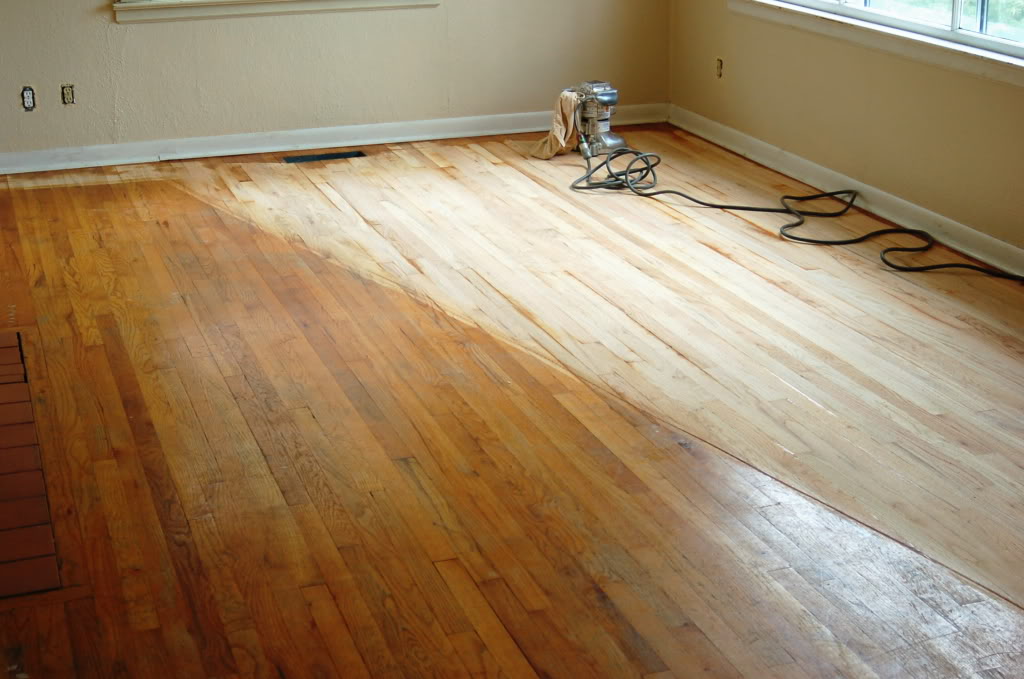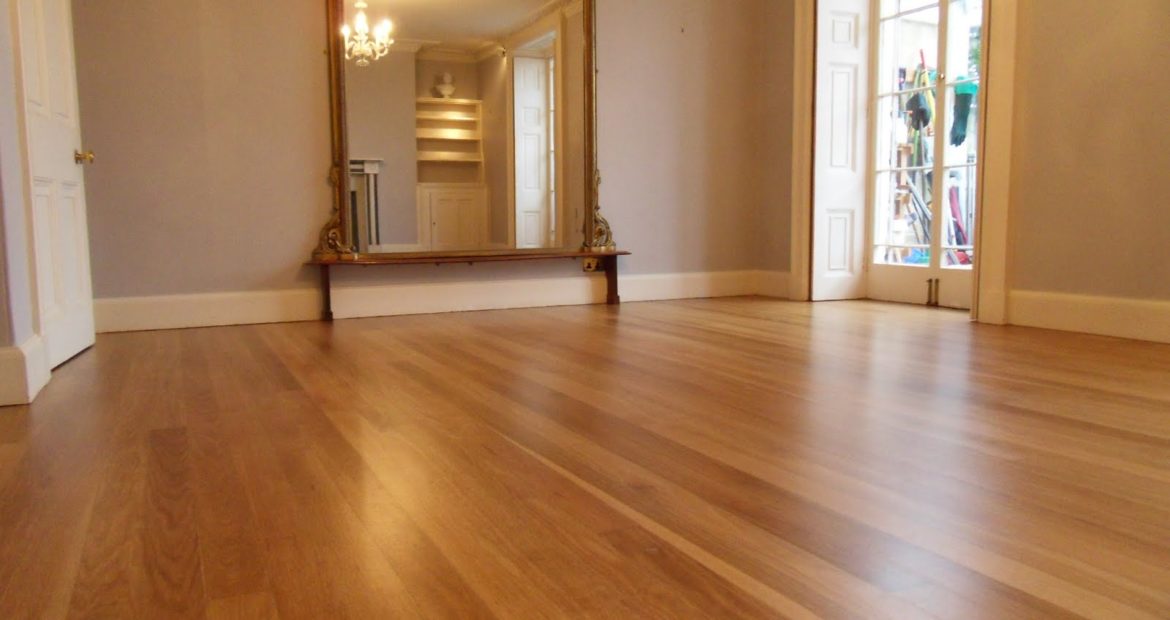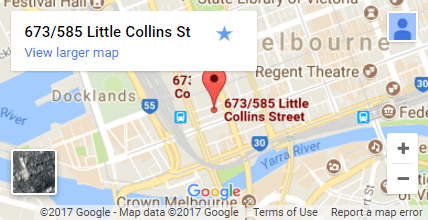Bamboo flooring is not only popular for its aesthetic appeal but also for its durability and eco-friendliness. Despite its toughness, over time, bamboo floors may show signs of wear and tear such as scratches and dullness. This brings about the important question: Can you sand bamboo floors to restore their original lustre?
The answer is yes, but the floor sanding Geelong process involves certain considerations that are crucial for achieving the best results. In this guide, we will walk you through the essentials of sanding bamboo flooring.
What is Bamboo Flooring?
Bamboo is a sustainable and resilient category of flooring materials that mimics the feel and appearance of hardwood.
Originating from the fast-growing bamboo plant, this type of flooring can usually be refinished just like traditional wood floors, providing homeowners with a long-lasting surface.
There are multiple types of bamboo flooring, each with different structural qualities. The main types include horizontal, vertical, and strand-woven bamboo – each varying in durability, look, and sanding requirements.
Bamboo Vs. Traditional Hardwood: What’s the Difference?
Bamboo flooring often draws comparisons to traditional hardwood due to its similar appearance and functionality. Both materials provide a timeless, aesthetic charm that enhances the visual appeal of living spaces. However, bamboo is technically a grass, not wood, which brings unique characteristics to the table.
Unlike hardwood, which comes from trees and requires several decades to mature, bamboo is a highly renewable resource that can reach maturity in about three to five years, making it an eco-friendly option. Additionally, bamboo floors are known for their strength and durability, often outperforming hardwood in terms of hardness and resistance to wear and tear.
Types of Bamboo Flooring
Bamboo flooring is not limited to a single type but comes in various forms, each offering different aesthetics and benefits. The three main types of bamboo flooring available in the market are horizontal, vertical, and strand-woven.
Horizontal bamboo features stalks glued together horizontally, showcasing the natural nodes of the bamboo in a prominent, knuckle pattern that is visually striking.
Vertical bamboo, by contrast, aligns stalks vertically, resulting in a smoother, more uniform appearance with fewer visible joints.
Lastly, strand-woven bamboo is manufactured by compressing shredded bamboo fibres under high pressure, creating significantly harder and denser planks than the other two types.
Understanding the Refinishing Process
Understanding the refinishing process of bamboo floors is vital, as it impacts not only the aesthetic and functional quality of the floors but also their longevity and performance.
Sanding is a primary step in refinishing that requires careful execution. It involves removing the top damaged layer of the floor to unveil a fresh layer that looks new. However, the type of bamboo flooring affects how it should be sanded and refinished. Knowledge about these specifics ensures that owners maintain the integrity and beauty of their bamboo flooring for years to come.
Identifying When Refinishing is Necessary
Refinishing bamboo floors is a consideration after several years of usage, especially when visible signs of wear such as scratches, dents, or dulling of the finish appear.
Bamboo flooring, depending on its finish and the level of foot traffic, can show age over time. The necessity for refinishing also depends on the type of bamboo flooring; for instance, strand-woven bamboo is incredibly tough and might not require refinishing as frequently as horizontal or vertical bamboo.
Understanding the type and condition of your bamboo flooring is crucial in determining whether refinishing is necessary.

Benefits of Sanding Bamboo Floors
Refinishing bamboo floors extends their lifespan and restores their original beauty, making them look brand new without the need for a complete replacement. This process not only enhances the appearance of the floors but also adds a layer of protection, helping to resist further scratches and damage.
Additionally, refinishing is a cost-effective method compared to replacing entire sections of flooring, and it contributes to the sustainability aspect of bamboo by maximizing the material’s use over a longer period. Lastly, it provides an opportunity to change the colour or finish of the floors, allowing for a refreshed and updated look in your home’s décor.
Preparing to Refinish Bamboo Flooring
Evaluating the Type of Bamboo Flooring
Before you begin sanding your bamboo floors, it is essential to identify the type of bamboo used. This classification will largely determine your approach to the refinishing project.
There are three main types: horizontal, vertical, and strand-woven.
Horizontal and vertical bamboos are similar to traditional wood planks, while strand-woven is a denser material made from shredded bamboo fibres that are fused under high pressure. The type of bamboo affects its durability and how it withstands sanding processes.
Necessary Tools and Equipment for Refinishing
Gathering the right tools and equipment is a fundamental step in refinishing your bamboo floors. Key items include:
- A sanding machine for even abrasion
- Fine grit sandpaper
- Cleaning products to remove dirt and debris
- Rags or a paintbrush (for staining)
- Protective gear such as masks, gloves, and eyewear
- Stain and sealer for the final touches
Ensure all tools are at hand before you begin to facilitate a smooth refinishing process.
Step-by-Step Bamboo Floor Sanding Process
1. Cleaning the Floors
Prep your workspace by removing all furniture and fixtures from the room. Ensure thorough cleaning to eliminate any dirt or particles that could interfere with the sanding process.
This step is crucial to avoid scratching or damaging the floor during sanding. Tape up doorways or vents to prevent dust from spreading throughout your home.
2. Sanding Techniques and Tips
When sanding bamboo floors, it is essential to use the right technique to prevent damage. Begin with coarse grit sandpaper to remove the old finish and gradually move to finer grit to smooth the surface.
Be cautious not to sand too aggressively, especially with strand-woven bamboo, which is denser and can be challenging to sand. A light touch and even pressure are recommended. Always sand in the direction of the bamboo grain to achieve the best results.
3. Staining and Sealing
Once the sanding is complete and the floor is smooth, proceed to staining. Test your stain on a small, inconspicuous area of the floor to ensure it provides the desired colour and finish. Apply the stain evenly using a rag or paintbrush, working in manageable sections. After staining, allow the floor to dry completely before applying a sealant.
Use a high-quality polyurethane sealer to provide a durable finish that protects the bamboo from scratches and wear. Apply two coats, allowing sufficient drying time between each.
By carefully following these steps and using the right techniques and materials, you can successfully refinish your bamboo floors, restoring their beauty and extending their lifespan.
Remember, refinishing bamboo flooring may require specific considerations, so take your time to do it right or consult a professional if you are unsure.
Aftercare and Maintenance
Proper aftercare and maintenance are crucial for extending the lifespan of your bamboo flooring and keeping it looking its best.
Following the refinishing process, implement daily and routine care along with long-term maintenance strategies to preserve the beauty and integrity of your floors.
Daily and Routine Care Tips
- Sweep Regularly: Use a soft-bristle broom or a dust mop to sweep your bamboo floors daily. This prevents dirt and grit from scratching the surface.
- Use Proper Cleaning Products: Always use cleaners specifically designed for bamboo or hardwood floors to avoid damaging the finish. Avoid using abrasive scrubbers or harsh chemicals.
- Immediate Spill Cleanup: Bamboo is less resistant to moisture than some other flooring types. Clean up any spills immediately to prevent water damage.
- Use Felt Pads: Attach felt pads to the legs of furniture to avoid scratches and dents when moving items around.
- Avoid High Heels and Sharp Objects: High heels and sharp objects can dent or scratch your bamboo floors. Place protective mats in high-traffic areas and remove shoes when possible.
Long-Term Maintenance Strategies
- Refinishing Schedule: Depending on the traffic and wear, consider refinishing your bamboo flooring every 10-15 years. This will restore its look and provide a new protective layer against future damage.
- Use Sun-Protective Treatments: UV rays can fade and discolour your bamboo flooring over time. Using blinds or curtains during peak sunlight hours can minimize this exposure.
Regular Professional Assessments: Have a flooring professional inspect your bamboo floors periodically to catch any potential issues early, such as warping or cracking. - Regulate Indoor Climate: Bamboo floors perform best in stable indoor environments. Maintain a consistent humidity level between 30-50% and a temperature of 60-80 degrees Fahrenheit to prevent planks from expanding or contracting excessively.
Conclusion
Refinishing bamboo flooring is not just about maintaining its aesthetic appeal but also about preserving its durability and functionality. This process allows you to handle minor damages like scratches or dents and restore the floor’s original shine and smoothness.
Regular refinishing can significantly extend the life of your bamboo flooring, ensuring that you enjoy this beautiful, sustainable choice for many years.
Whether you choose to DIY or hire a floor sanding Geelong professional, understanding the basics of bamboo floor care is essential for sustaining its beauty and functionality.
For professional assistance, reach out to Timber Floor Sanding Melbourne. With an experienced team and dedication to customer satisfaction, we have built a strong track record of delivering excellent results. Get in touch today and let us revive your floors to its former glory!


